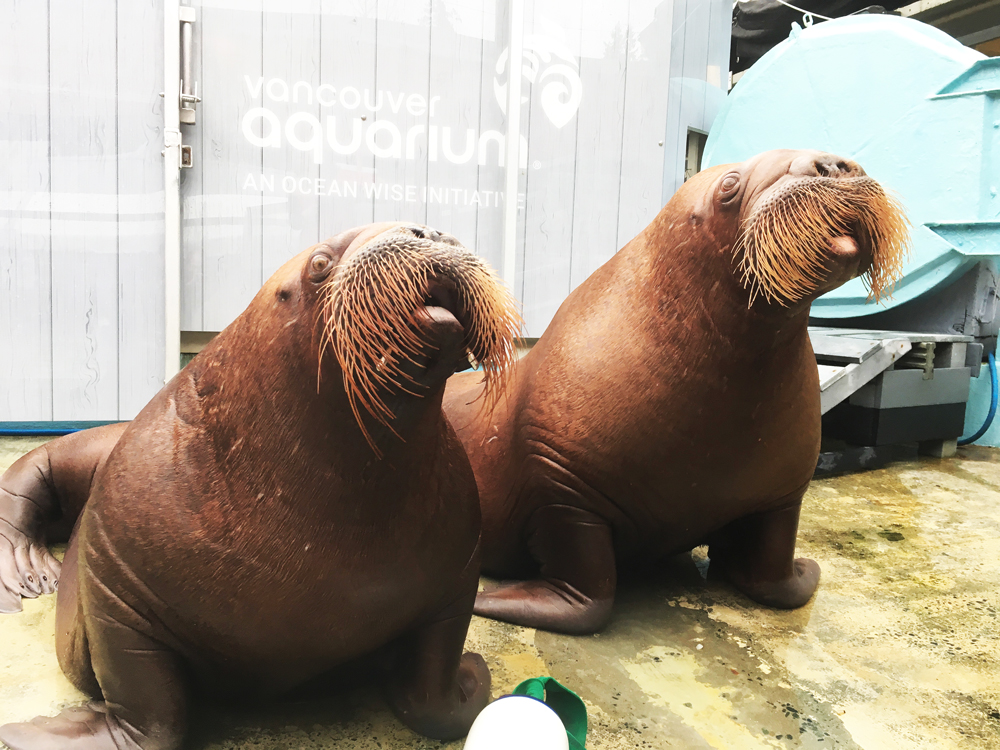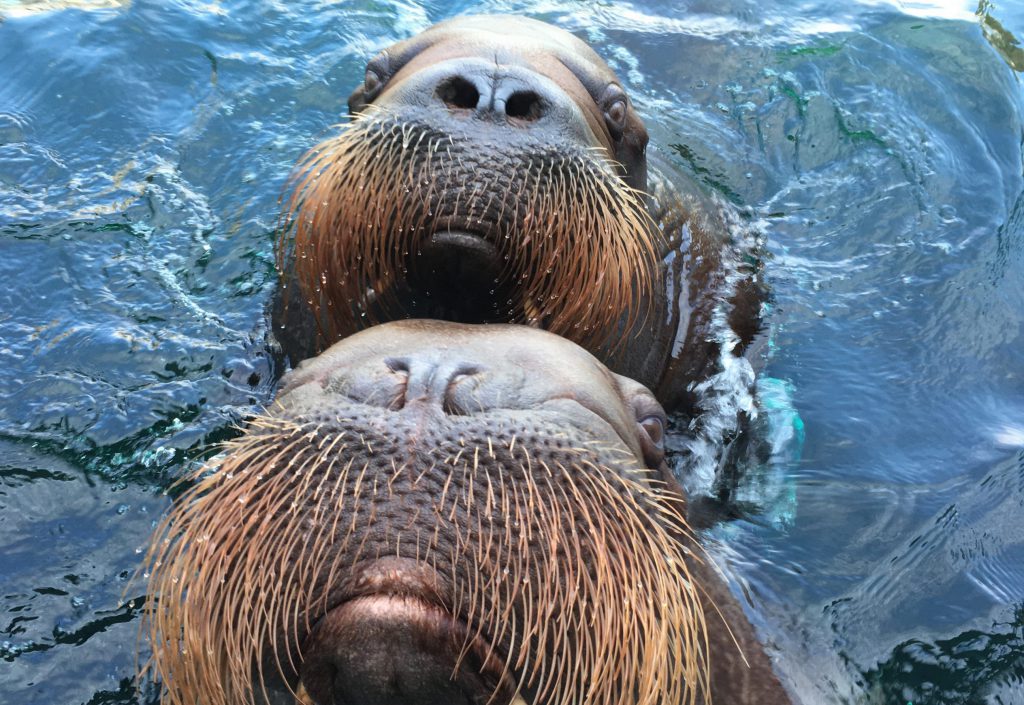
Dr. David Rosen, an Assistant Professor at UBC’s Marine Mammal Research Unit, has often contended that walrus should be the poster child for climate change, particularly for sea ice loss in the Arctic. After all, walruses are an “ice-dependent species” that require stable ice to raise their calves. They also need the ice to be in a specific location in order to forage efficiently. When the ice isn’t where it is supposed to be, walruses have to swim farther from their ice floes to find food, which takes more energy (meaning they need even more food). In very poor ice years they may be forced to haul out on land, which not only raises costs to reach foraging grounds, but also where the threats of disease and trampling dramatically increase.

The two visiting walruses, Balzak and Lakina
In December 2017, two young walruses — Balzak and Lakina — arrived at the Vancouver Aquarium. They were born in the Spring of 2016 at the Aquarium du Quebec, and were on temporary loan. For Dr. Rosen, these large, exciting toddlers soon became the focus of an exciting research program to answer the question “how much does it take to power a walrus?”.
As Dr. Rosen explains, “One of the central questions that scientists face is trying to figure out how much food a walrus normally needs and how much more it needs if it has to be more active or spend more time in the water”. Although scientists have built mathematical models to try and answer this question, there are no real data on the energy expenditure of walruses. This means scientists have had to base their models on information from other species, despite the fact walruses seem pretty different than most other marine mammals.

The research program had five related studies. The first was to keep careful track of the food intake and growth of the animals. These data provided insight into their growth patterns and how efficiently they converted food into body mass.
A second study carefully tracked how their body changed as they grew. Training staff taught the walruses to lie on measuring ropes to track how different parts of their body grew as they got older. It also provided data for evaluating the “condition” of young walruses in the wild.
A third project tracked the growth of their tusks. Both male and female walruses have tusks, although they are often removed in Aquariums. Scientists took fine-scale measurements of the width, length, and thickness of their tusks as they got older. Given “you are what you eat”, tusks provide a permanent chemical record of the feeding ecology of walruses over their lifetime. In order to use tusk samples — either from wild animals or museum specimens — scientists need to know exactly what life stage the parts of the tusk represent.
The final two studies measured two types of energy expenditure: resting metabolic rate and swimming metabolism. Resting metabolic rate is the amount of energy a walrus uses while resting calmly in water, and is the foundation of mathematical models used to estimate total food requirements.
“These types of energetic studies had never previously been done with young walruses”, says Dr. Rosen. “The walruses had to be trained to sit quietly underneath a floating dome, while we measured how much oxygen they consumed and carbon dioxide they produced. Remember, this required a rambunctious toddler walrus weighing several hundred kilograms to sit still for 7-10 minutes floating in a dome with minimal food reinforcement.”
Surprisingly (and with credit to the Aquarium training staff) it only took a few months for the walruses to learn this behavior. Dr. Rosen and his team were then able to measure resting metabolism every few weeks over an entire year, allowing them to track changes as the animals grew and as the seasons changed (which is very important for determining the food requirements of almost all marine mammals).

The final project was perhaps the most exciting from both a science and training perspective. The amount of energy walruses use swimming is perhaps their greatest energy expenditure in the wild, and the cost most likely to be affected by climate change. To measure this, the training staff taught the walruses to swim multiple lengths of their pool completely underwater (~110m), only surfacing within the floating dome at the end of their task! The results represent the first direct measurements of the cost of swimming in young walruses. Even Dr. Rosen was “totally amazed it worked out so well.”
Unfortunately, both Dr. Rosen and the Aquarium training staff said a tearful goodbye in November when Balzak and Lakina returned to Quebec City. Yet the information they provided during their stay in Vancouver, together with data from older walruses at other institutions, will be instrumental in enabling scientists to better predict how the loss of sea ice will affect the health of individual walruses and, ultimately, how climate change will impact walrus populations in the Arctic.
